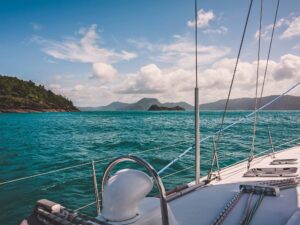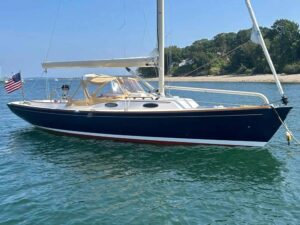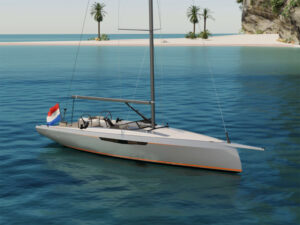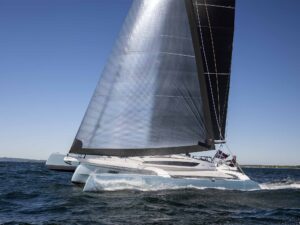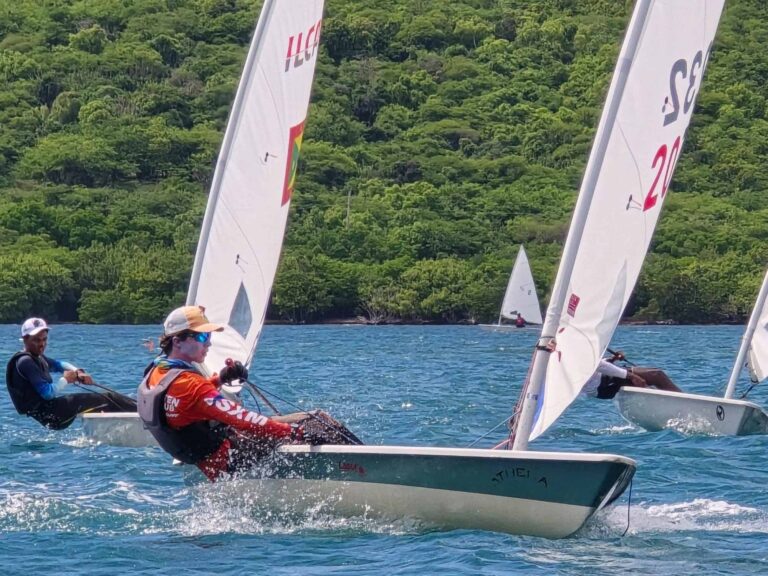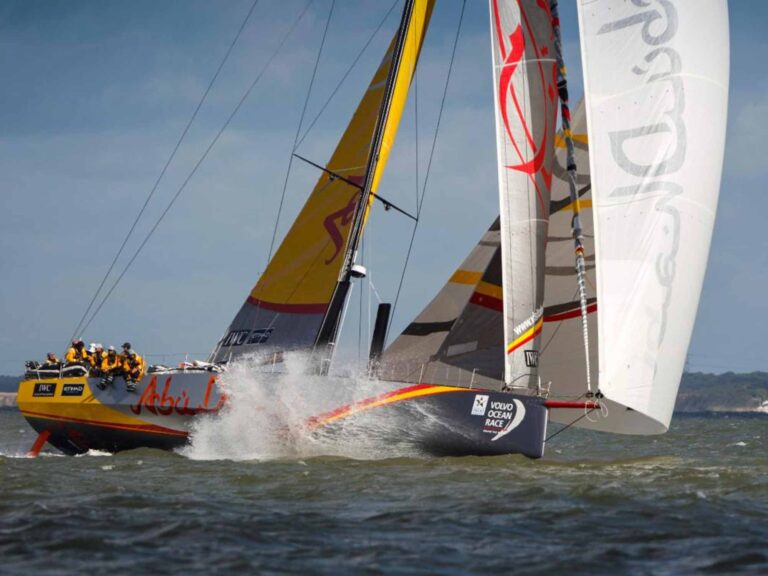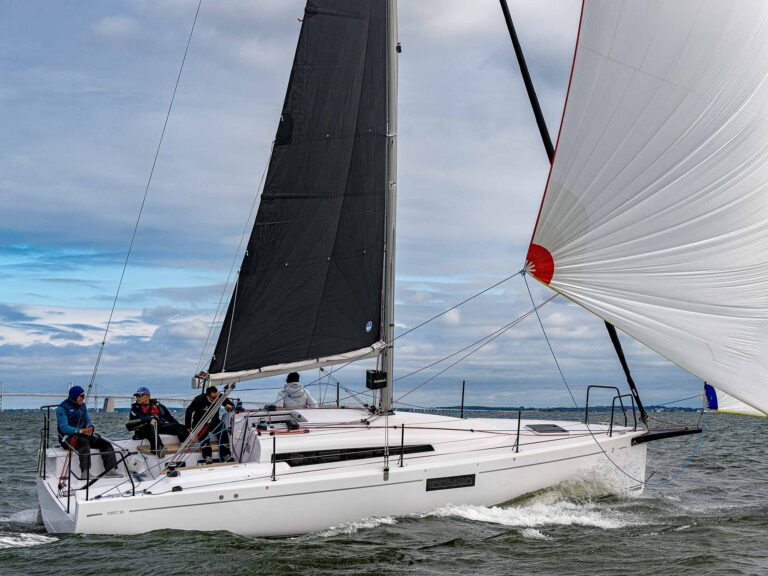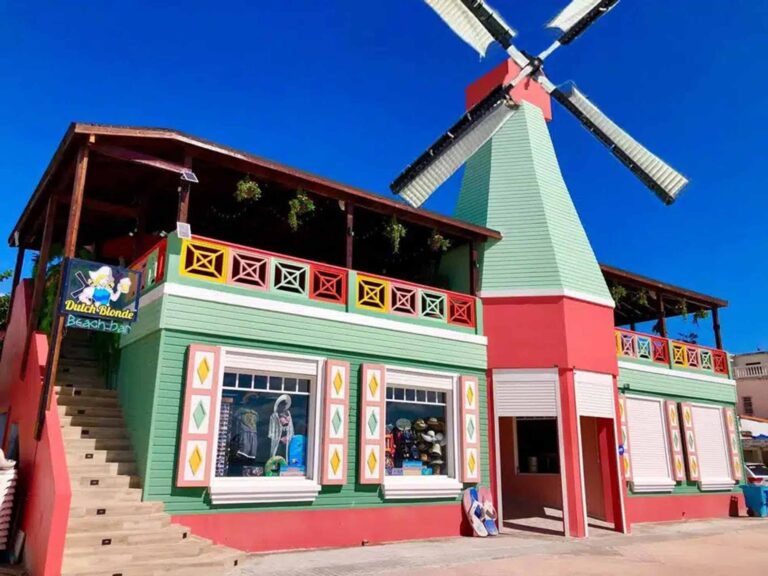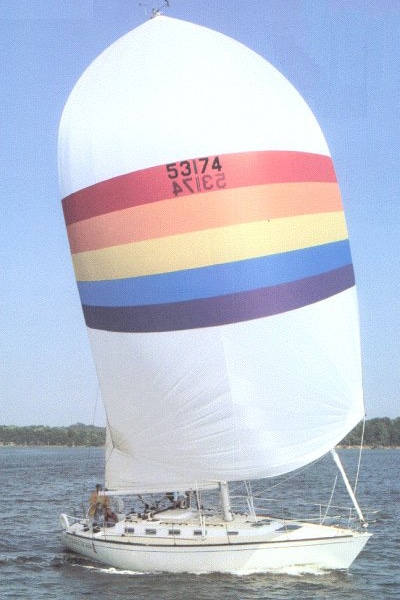
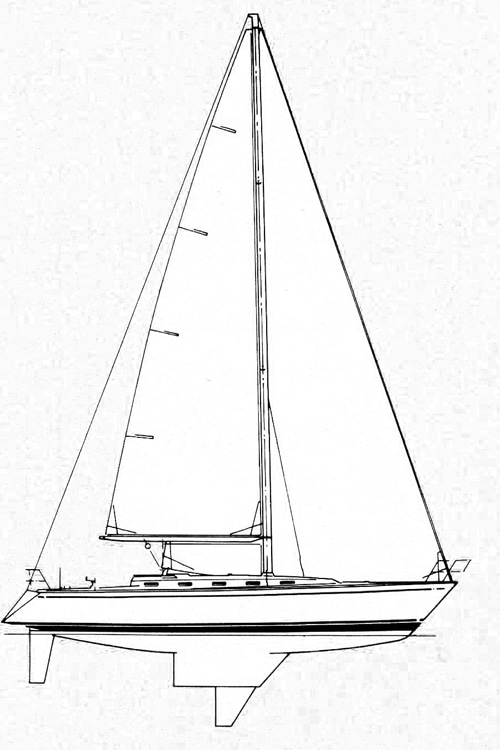
A true passagemake is a boat that carries its crew safely, comfortably, and efficiently from Point A to Point B, regardless of the weather. The Tartan 40 is a fine example of the breed, and Hull No. 46, built in 1988, took two mates and me 1,500 nautical miles, from the West Indies to New England, in less than 11 days-an average of 140 miles a day-during which wind velocities averaged 10 knots. Once, during a frontal passage, the wind gusted to 40 knots, and the Tartan handled it with aplomb.
The Tartan’s sail area-to-displacement ratio of 17.1, appropriate for a racer/cruiser, bears out its light-air capabilities. Its displacement-to-length ratio of about 250 suggests a cruising hull with interior volume sufficient to transport essential voyaging cargo without impeding its progress through the water. A Scheel-keel version (drawing 5 feet 1 inch) was later added to the deep-fin and keel/centerboard configurations that were initially offered.
A little genius in this boat shouldn’t be surprising, for it was designed by Sparkman & Stephens during the fertile era between the mid-1970s and mid-1980s, when the Swan 431, Swan 47, She 36, and Tartan 37 came off that firm’s boards. Three interior layouts were offered upon the boat’s debut: Plan A, the Standard, pictured here, has an aft-facing nav station to port of the companionway and four hanging lockers; Plan B has a wet locker and stowage where the Standard’s nav station is and a forward-facing nav station forward of the quarter cabin; Plan C locates a second head in the quarter cabin.
Designed by Tim Jackett in collaboration with S&S, the 40’s interior is meant to go to sea. The Standard layout-to my mind, the most seamanlike of the three-has a trio of good sea berths: port and starboard saloon settees and the double berth in the quarter cabin. Handholds are everywhere below, and teak cabinetry presents solid yet forgiving chamfered surfaces to fall into when in a seaway.
The U-shaped galley is to port of the companionway and, with two opening ports, has great ventilation, but the nav station, located aft of the companionway, receives minimal airflow despite an opening port to the cockpit well. A fan would be a nice addition. I never got used to facing aft, but there’s always Tartan 40 Plan B. The Standard’s single head, just forward of the dinette, was cramped but bright, well ventilated, and easy to clean.
The Tartan 40’s decks are wide, with substantial teak toerails, and the molded nonskid pattern is hard-core. The large cockpit has extremely comfortable coamings. There’s only one cockpit locker, to port, and it’s deep and vertical. It easily received a four-man life raft, bosun’s chair, dock lines, fire extinguisher, and other cockpit amenities and kept them all dry. The two lazarettes are also deep and dry, with plenty of room for cruising props.
Getting to the steering quadrant from the vertical lazarettes and locker would be a real challenge in a seaway. An access panel cut in the after bulkhead in the quarter cabin would facilitate maintenance and repairs.
The 40’s hull, laid up with unidirectional fiberglass, balsa coring, vinylester resin in the skin coat, and isophthalic NPG gelcoat, is blister resistant and has weight and strength in the right places. For offshore use, the mast would benefit from the addition of an inner forestay and runners to support the upper sections.
Between 1984 and 1989, Tartan built 72 40s, yet few appear in brokerage listings. Perhaps Tartan 40 owners know they’re well off and hang on to their boats. I found a 1985 sloop for $150,000 and a 1989 cutter with hard dodger and Scheel keel for $145,000, both loaded-remarkable prices for boats that will take you comfortably, safely, and efficiently to almost any cruising ground in the world.
Nim Marsh is a Cruising World associate editor.

